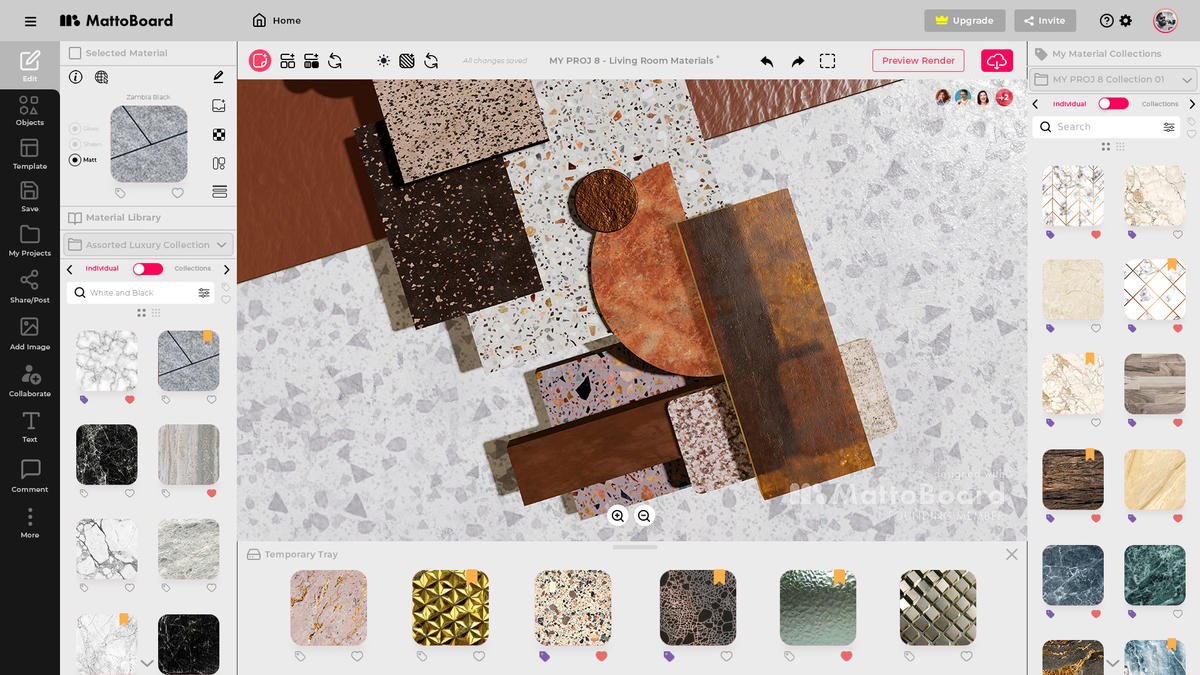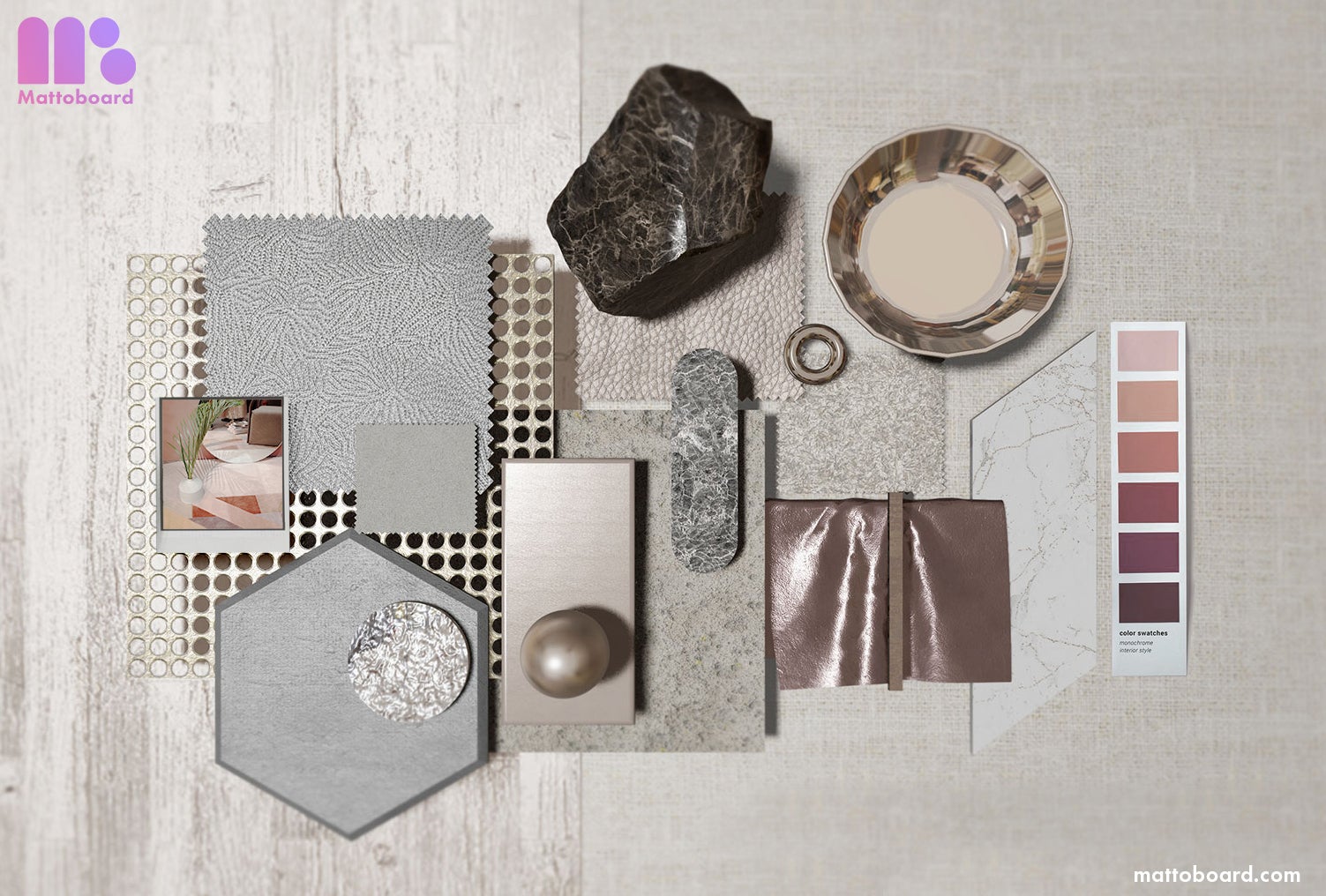Guy Ailion and George Hart founded Mattoboard with one shared goal in mind: Make 3D software accessible and simple for interior designers. The duo first met through Y Combinator, a tech startup accelerator that was involved in the early stages of Airbnb and DoorDash, and decided to combine their respective interests in interior design and 3D software to allow interior designers to create realistic 3D concept boards for free. A year or so after they put their heads together, Mattoboard is set to launch this fall—a specific date has not been set—with a 5,000-person waitlist.
Ailion, Mattoboard’s CEO and a partner at KSR Architects & Interior Designers in London, observed interior designers generally gravitating toward whatever materials samples were on hand rather than seeking out new options for their concept boards because the process is so laborious. With the ongoing digitization of the interior design space, Ailion sought to give designers access to a broad database of digital samples and materials.
Hart, who has a background in engineering and previously co-founded two other startups, turned out to be the perfect partner to help make Ailion’s vision a reality. With a specialization in 3D compositing, or using 3D software to make realistic images, Hart built Mattoboard over the course of six months.
“We really wanted to emancipate the interior designer by not having them feel encumbered by these old methods of accessing materials and having the responsibility and complications of storing and filing them,” says Ailion. “We both share this vision of getting designers to be more creative by giving them more options, no matter where they are in the world.”
The app, which is funded by Techstars Accelerator, is currently being beta tested by a small sample of users, and will officially launch once user satisfaction grows. When it does, the program will allow designers to build 3D concept boards that they can share with teammates or clients, who can then leave comments or suggestions. Similar to Canva, a free graphic design platform, Mattoboard includes a free database of materials, samples and accessories that users can tap. They will be able to select realistically rendered samples—more than 2,000 materials, ranging from white oak to tartan fabric—from the database or upload their own photos. Right now, the samples are generic (white oak is white oak). But as Mattoboard evolves, Ailion says users will also be able to choose from brand-specific samples.

Beyond offering an expansive library of materials, Mattoboard also aims to enhance designers’ creative process by introducing a third step to the classic drag-and-drop method: drag, drop and stack. Since Mattoboard uses 3D software, users can dynamically stack samples on top of one another as if it were a physical concept board, a functionality Ailion calls “gravity field.” If you stack, say, a leaf on top of a wood sample, the leaf will cast a shadow on the wood. Depending on how you build your composition, the end result can mirror the evocative beauty of a well-designed flat lay.
“We re-create that exact same inspirational moment of mixing and matching,” he says. “But we do it with access to thousands of materials all within arm’s reach, and you get exactly what you need when you need it.”
While Mattoboard’s basic platform will be free, users can pay to access premium features such as “deep render,” which simulates how light interacts with physical objects through a process called “ray tracing.” Want to use a glass coffee table? The deep render can capture how the afternoon light would refract through that tabletop and appear in the room.
To maximize the platform for their target market, Ailion and Hart sought feedback from 300 interior designers who tested an early version of Mattoboard. Some designers suggested introducing templates to spur the creative process instead of beginning with a blank board, so the founders added multiple templates that allow users to quickly drag, drop and stack their samples. “George and I are sort of the coordinators, but we’re really letting the interior designers tell us, ‘These are the types of materials we want. This is how we want to organize our materials. This is how we want to start a board,’” says Ailion.
That designer-first mentality will continue to drive the founders’ approach to developing Mattoboard and refining its capabilities ahead of the launch. “We really want to make 3D curation easy and accessible for absolutely everyone,” says Ailion. “This starts with interior designers, who are in many ways the masters of curating materials and objects and mood boards together to tell stories. I want people to be able to tell stories with real-world objects.”
Homepage image: Courtesy of Mattoboard





























